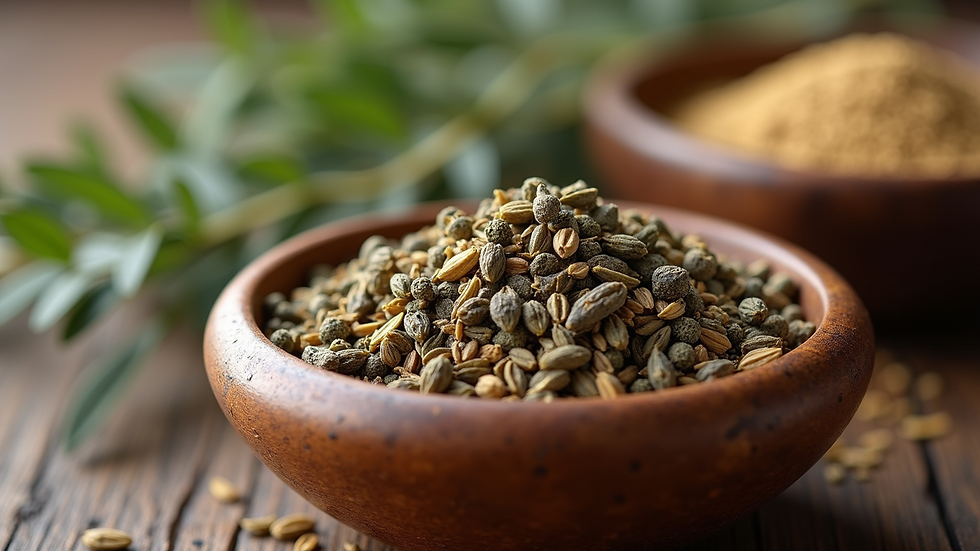How Evolutionary Herbalism Connects Past and Present
- greatlakesapotheca0
- Aug 4
- 3 min read
Herbalism has been a cornerstone of human health for thousands of years. From ancient civilizations to modern times, plants have provided remedies, nourishment, and wellness support. Today, a fascinating approach called evolutionary herbalism bridges the wisdom of the past with contemporary science. This approach helps us understand how plants and humans have co-evolved, shaping each other’s survival and health.
Understanding Herbalism Evolution Insights
Herbalism evolution insights reveal how traditional knowledge and modern research combine to create effective natural therapies. Early humans learned to use plants by observing nature and trial and error. Over generations, this knowledge was passed down, refined, and adapted to different environments.
Modern herbalists study these patterns to identify which plants have consistently supported human health. They also explore how plants have evolved chemical compounds to protect themselves from pests and diseases, many of which benefit human physiology. This evolutionary perspective helps explain why certain herbs work so well and how they can be used safely today.
For example, willow bark was used for centuries to relieve pain. Modern science discovered it contains salicin, a precursor to aspirin. This connection between ancient use and modern medicine highlights the power of herbalism evolution insights.

The Role of Traditional Herbal Practices in Modern Health
Traditional herbal practices are the foundation of many modern health approaches. Indigenous cultures worldwide have developed unique herbal remedies tailored to their local plants and health needs. These practices often include holistic views of health, considering body, mind, and environment.
Incorporating these traditions into modern herbalism allows practitioners to respect cultural heritage while applying scientific validation. For instance, Traditional Chinese Medicine (TCM) uses formulas combining multiple herbs to balance the body's energy. Modern herbalists analyze these combinations to understand their synergistic effects.
Practical recommendations for integrating traditional herbalism include:
Learning about local plant species and their traditional uses.
Consulting with knowledgeable herbalists or cultural practitioners.
Using herbs in ways that honor their original context and preparation methods.
This approach not only preserves valuable knowledge but also enhances the safety and effectiveness of herbal treatments.

How Evolutionary Herbalism Shapes Sustainable Plant Use
Sustainability is a critical concern in herbalism today. Overharvesting and habitat loss threaten many medicinal plants. Evolutionary herbalism offers insights into how plants and humans can coexist sustainably.
By understanding the evolutionary relationships between plants and their environments, herbalists can promote harvesting methods that allow plants to regenerate. For example, harvesting leaves instead of roots preserves the plant’s life cycle. Cultivating medicinal plants in home gardens or farms reduces pressure on wild populations.
Additionally, evolutionary herbalism encourages the use of diverse plant species rather than relying on a few popular herbs. This diversity supports ecosystem health and resilience.
Beginning steps for sustainable herbalism include:
Researching the growth habits and reproductive cycles of medicinal plants.
Supporting ethical wildcrafting practices.
Growing herbs locally to reduce environmental impact.
These practices ensure that herbalism remains a viable healing tradition for future generations.

The Science Behind Herbal Medicine Today
Modern science has transformed how we understand herbal medicine. Techniques like phytochemistry, pharmacology, and clinical trials provide evidence for the safety and efficacy of herbs. This scientific validation helps integrate herbal remedies into mainstream healthcare.
For example, research on echinacea shows its immune-boosting properties, while studies on turmeric highlight its anti-inflammatory effects. These findings support traditional uses and guide dosage recommendations.
Herbalists today combine this scientific knowledge with traditional wisdom to create personalized treatment plans. They consider factors such as:
The patient’s health condition and history.
Potential interactions with pharmaceuticals.
The quality and source of herbal products.
This balanced approach maximizes benefits while minimizing risks.
Embracing Herbalism Evolution Insights for Wellness
The connection between past and present in herbalism offers a rich resource for health and healing. By embracing herbalism evolution insights, individuals can make informed choices about natural remedies. This approach respects ancient traditions, applies modern science, and promotes sustainability.
To start incorporating evolutionary herbalism into your wellness routine:
Explore reputable sources and educational materials.
Consult with qualified herbal practitioners.
Begin with gentle, well-known herbs like chamomile or peppermint.
Observe how your body responds and adjust accordingly.


Comments